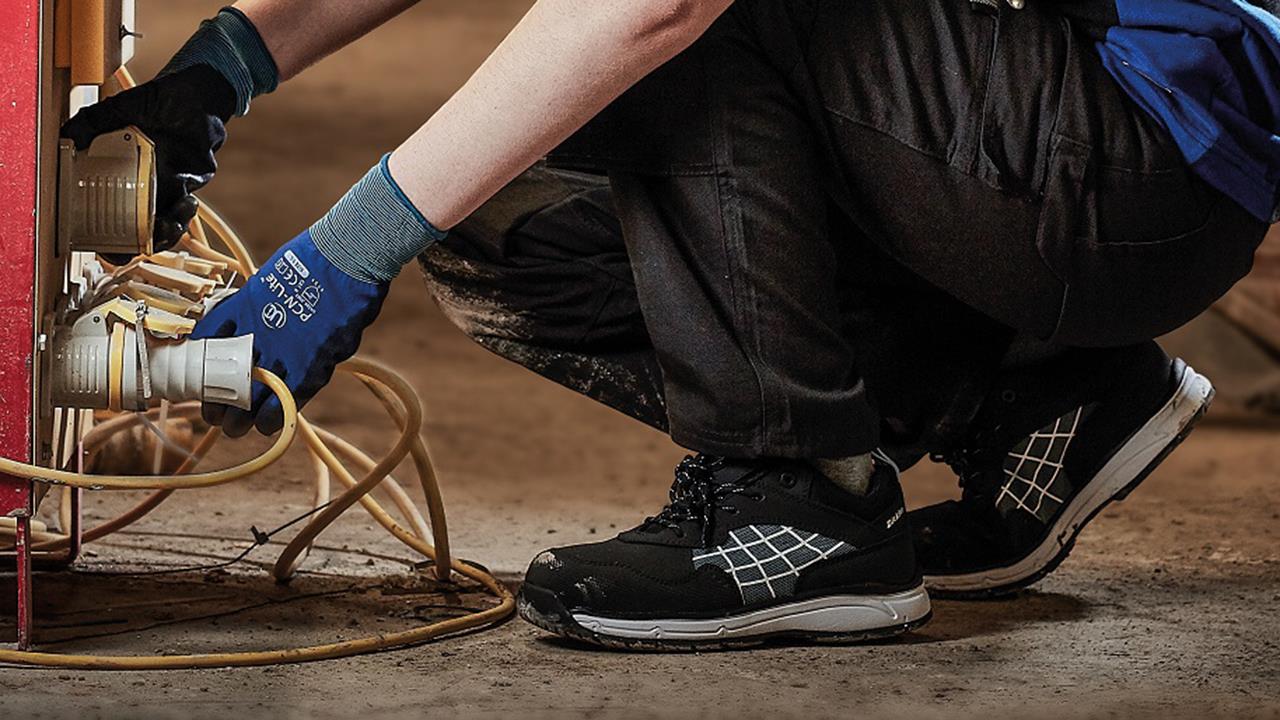

James Whitaker, Marketing Director at Dickies Workwear, shares his tips on what to look for when shopping for professional shoes or boots.
Today’s plumbers and heating installers demand footwear that’s not only safe and practical, but also helps them to cultivate a professional image. Whether you’re working in a private home, a public building, a plant room, or on a construction site, you’ll need footwear that’s not only safe and practical, but also fits with the overall image you’re trying to create at work.
Innovations in footwear over recent years means there’s now more choice than ever before when shopping for boots or shoes to get you through the working day. However, having such a broad selection to choose from can make it difficult to know where to start.
Here are the key points to think about before buying your next pair of shoes or boots.
Protect your feet
Regardless of your working environment, safety is always a top priority and foot protection should naturally be an important consideration when shopping for footwear.
Steel toe-caps plus a steel midsole for underfoot protection remain a popular choice among tradespeople working on construction sites. However, as most plumbers and heating installers spend much of their days bending or kneeling, it’s worth shopping for a flexible shoe or boot that doesn’t feel too heavy.
Go for lightweight options with composite anti-penetration protection, which generally offer better flexibility without the weightier feel of traditional steel toe-capped footwear.
Any tradesperson working indoors should look for options that offer maximum ground contact in wet conditions. For example, shoes and boots that meet the S3 safety classification offer high grip performance on smoother surfaces. An example of one of our own innovations in this area is the DTC outsole, which has ergonomic flex lines and geometric tread patterns for maximum ground contact, even in wet conditions.
Many safety footwear designs also include a level of heat protection (some outsoles are heat resistant to up to 300°C, for example) and anti-static properties.
Comfort is key
In addition to my point on flexibility, it’s also worth looking for features that will maximise comfort regardless of weather conditions, such as breathable textile lining. If you’re mostly working outdoors, or in particularly wet conditions, it’s certainly worth investing in a pair of boots or shoes with a fully waterproof membrane. Similarly, details such as padded uppers and cushioned footbeds provide added comfort – something you’ll be grateful for when on your feet all day.
Leather uppers tend to be more durable and water resistant than textile versions and, if you’re mostly working outdoors, it’s certainly worth investing in a pair of boots or shoes with a fully waterproof membrane.
Consider your ‘look’
With today’s tradespeople more image-conscious than ever, we’re seeing increased demand for workwear that helps them to create a professional look – and this extends to their footwear.
Many workwear manufacturers are producing footwear styles that are influenced by high street trends, helping tradespeople to create a smart image at work. Most footwear options are available in at least two colour-ways, with contrast detailing to allow for easy coordination with other items of clothing.
To help ensure your footwear looks good for as long as possible, choose styles that are easy to wipe clean. Additional scuff toe and heel protection also helps footwear to look less worn, while a tighter material construction reduces the possibility of trapped dirt.
Safe, comfortable footwear should always remain top priority and the variety currently available means you can find something that’s truly fit for purpose, without compromising on aesthetics. Functional, practical designs that make your job as comfortable and as safe as possible, while cultivating a professional style, is something you should demand whenever shopping for new footwear
If you'd like to keep up-to-date with the latest developments in the heating and plumbing industry, why not subscribe to our weekly newsletters? Just click the button below and you can ensure all the latest industry news and new product information lands in your inbox every week.